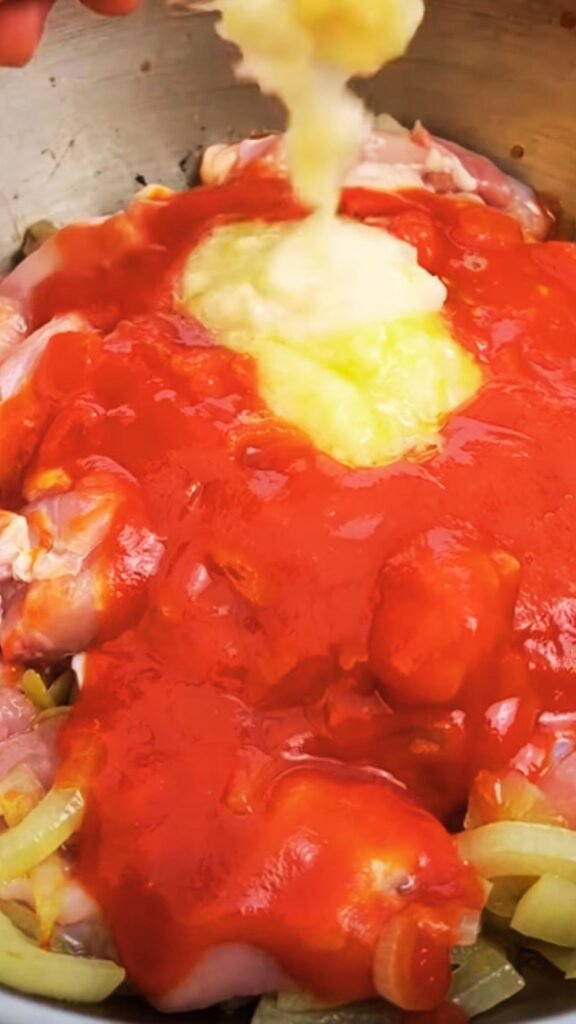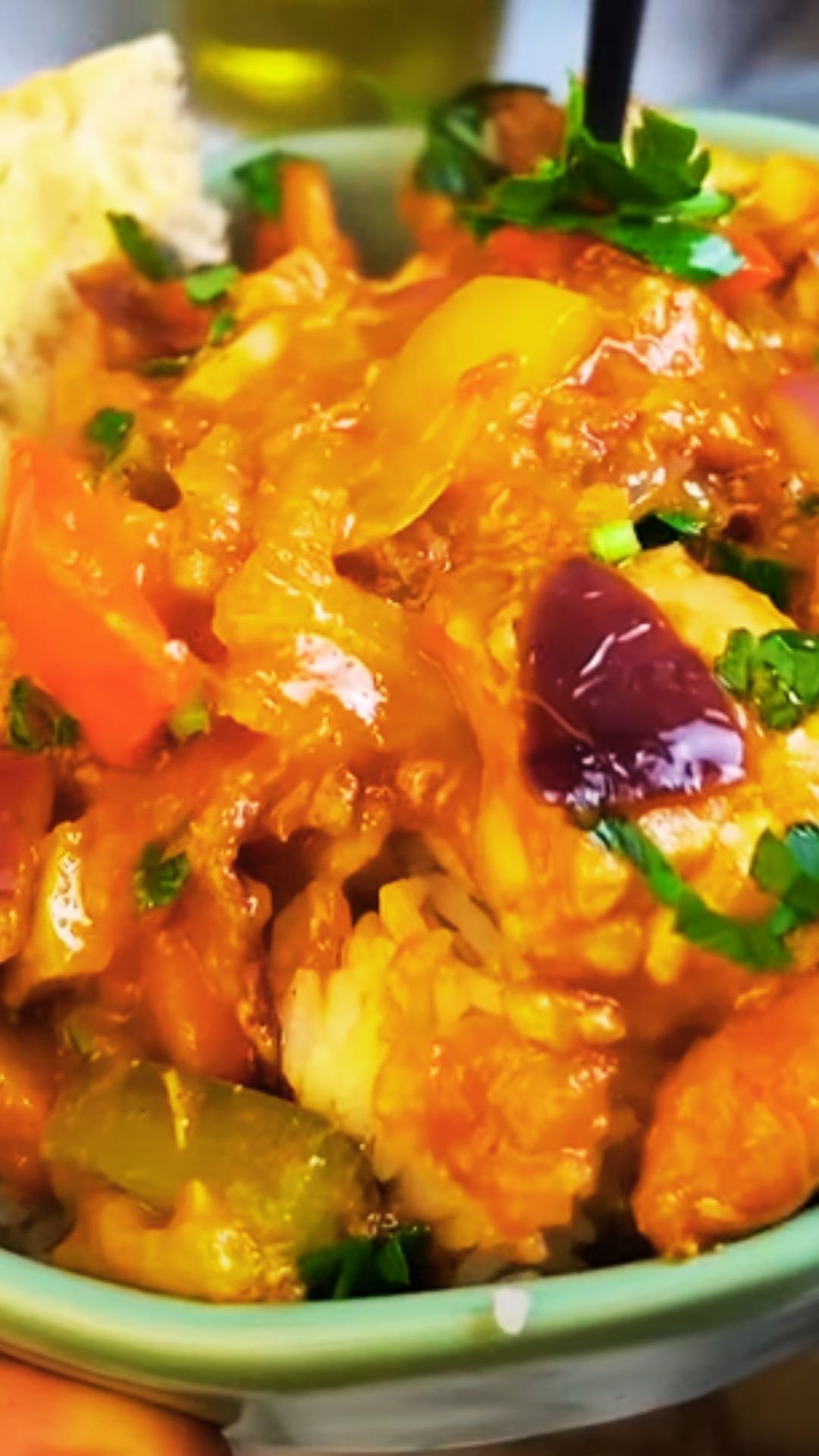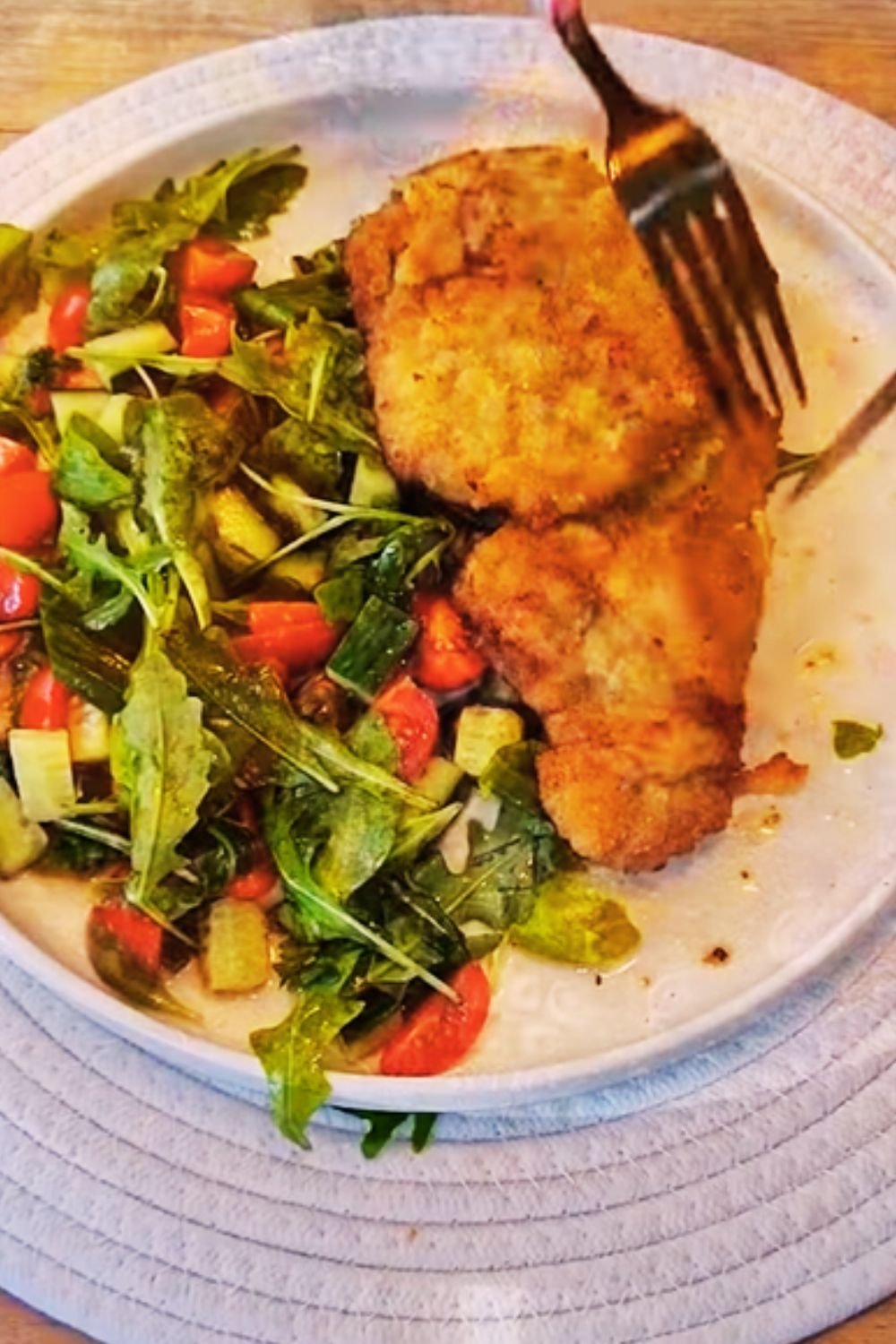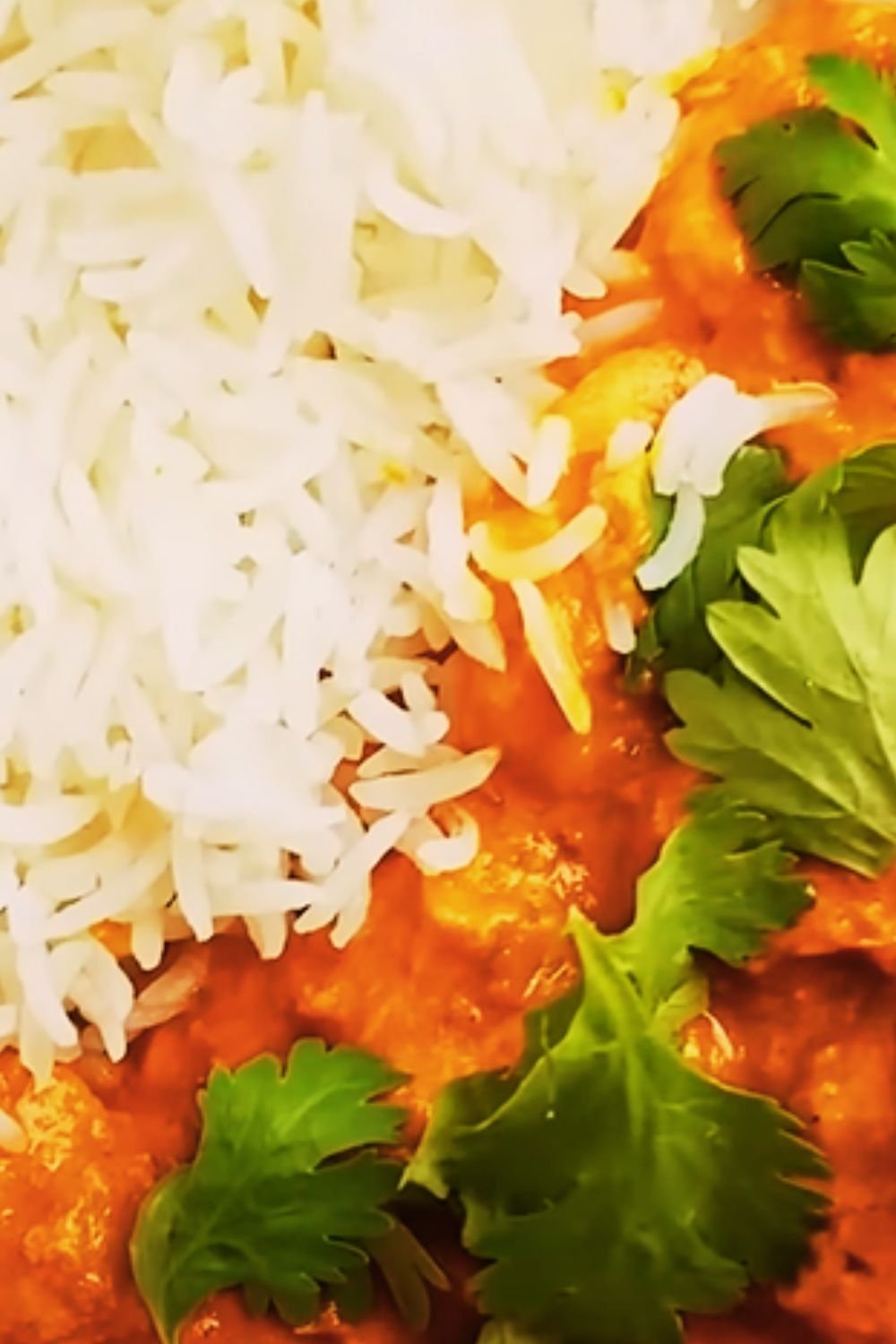When I first attempted to make chicken curry fifteen years ago, the result was nothing short of disastrous. My kitchen smelled like burnt spices for days, and my family politely pushed the rubbery chicken around their plates. Fast forward to today, and I’ve spent countless hours perfecting this art, learning from grandmothers in Kerala, experimenting with Thai variations, and even taking a masterclass in Mumbai. What I’ve discovered is that chicken curry isn’t just a dish—it’s a canvas for creativity, comfort, and cultural expression.
The beauty of chicken curry lies in its incredible versatility. From the coconut-rich curries of South India to the tomato-based gravies of the North, from the fragrant Thai green curry to the hearty British-Indian adaptations, each variation tells a story. My personal favorite remains the home-style Indian chicken curry that my neighbor Mrs. Patel taught me, but I’ve adapted it over the years to create what I now call my signature version.
Understanding the Foundation: Key Terms and Techniques
Before diving into the actual cooking process, I want to share some essential terms that will help you navigate the world of chicken curry with confidence.
Tempering (Tadka) : The process of heating whole spices in oil or ghee to release their essential oils and create the flavor base of your curry.
Bhuna : A slow-cooking technique where ingredients are stirred and cooked until the moisture evaporates and the mixture becomes paste-like, intensifying flavors.
Dum Cooking : A method where the curry is sealed and cooked on low heat, allowing flavors to meld and chicken to become tender.
Garam Masala : A warming spice blend typically containing cardamom, cinnamon, cloves, and other aromatic spices, added toward the end of cooking.
Mise en Place : Having all ingredients prepped and ready before you start cooking—crucial for successful curry making.
Marination : The process of coating chicken in yogurt, lemon juice, and spices to tenderize and flavor the meat before cooking.
My Essential Chicken Curry Recipe
After years of refinement, this recipe represents my go-to method for creating restaurant-quality chicken curry at home. I’ve broken it down into manageable steps that even beginners can follow successfully.
Ingredients for the Perfect Chicken Curry
| Category | Ingredient | Quantity | Purpose | Substitution Options |
|---|---|---|---|---|
| Protein | Chicken (bone-in thighs) | 2 lbs | Main protein, stays moist | Boneless thighs, chicken breast |
| Base Aromatics | Large onions, sliced | 3 medium | Flavor foundation | Shallots, frozen chopped onions |
| Fresh ginger, minced | 2 inches | Heat and flavor | Ground ginger (1 tsp) | |
| Garlic cloves, minced | 8-10 | Aromatic base | Garlic powder (2 tsp) | |
| Fresh tomatoes, chopped | 4 medium | Acidity and body | Canned tomatoes (28 oz) | |
| Spices | Cumin seeds | 1 tsp | Earthy warmth | Ground cumin (1/2 tsp) |
| Coriander seeds | 2 tsp | Citrusy notes | Ground coriander (1 tsp) | |
| Turmeric powder | 1 tsp | Color and earthiness | None | |
| Red chili powder | 2 tsp | Heat level | Cayenne pepper, paprika | |
| Garam masala | 2 tsp | Warming finish | Curry powder blend | |
| Liquids | Coconut milk | 1 can (14 oz) | Richness and body | Heavy cream, cashew cream |
| Chicken broth | 2 cups | Depth of flavor | Water, vegetable broth | |
| Plain yogurt | 1/2 cup | Tanginess and tenderizing | Greek yogurt, buttermilk | |
| Fats & Finishing | Ghee or oil | 4 tbsp | Cooking medium | Coconut oil, vegetable oil |
| Fresh cilantro | 1/2 cup | Fresh finish | Mint leaves, green onions | |
| Fresh lime juice | 2 limes | Brightness | Lemon juice, vinegar |
Step-by-Step Cooking Process
Preparation Phase (15 minutes)
- Marinate the chicken: I combine the chicken pieces with half the yogurt, a pinch of turmeric, salt, and half the minced ginger-garlic. This sits for at least 30 minutes, though I prefer overnight marination when possible.
- Prep your aromatics: Slice onions uniformly, mince ginger and garlic together, and chop tomatoes. Having everything ready prevents burning during the cooking process.
- Toast and grind spices: I dry-roast cumin and coriander seeds in a pan for 2-3 minutes until fragrant, then grind them fresh. This extra step elevates the entire dish.
Building the Base (20 minutes)
- Create the onion base: Heat ghee in a heavy-bottomed pot over medium heat. Add the sliced onions and cook slowly for 12-15 minutes until deep golden brown. This patience pays off tremendously in flavor development.
- Add aromatics: Stir in the remaining ginger-garlic paste and cook for 2 minutes until the raw smell disappears. The mixture should be fragrant and golden.
- Incorporate tomatoes: Add chopped tomatoes and cook until they break down completely, about 8-10 minutes. I often mash them with the back of my spoon to speed up the process.
Spice Integration (10 minutes)
- Bloom the spices: Add turmeric, chili powder, ground cumin, and coriander. Cook for 1-2 minutes, stirring constantly to prevent burning. The mixture should smell intensely aromatic.
- Add liquid gradually: Pour in a splash of chicken broth to deglaze the pan, scraping up any browned bits. This prevents the spices from burning and adds depth.

Cooking the Chicken (25 minutes)
- Brown the chicken: Remove chicken from marinade and add to the pot. Brown on all sides for about 6-8 minutes total. Don’t overcrowd—work in batches if necessary.
- Build the gravy: Add the remaining chicken broth and coconut milk. Bring to a gentle simmer, then reduce heat to low. Cover and cook for 15-20 minutes until chicken is tender and cooked through.
- Final seasoning: Stir in garam masala, remaining yogurt, and adjust salt to taste. Simmer uncovered for 5 minutes to thicken slightly.
Finishing Touches (5 minutes)
- Rest and garnish: Let the curry rest off heat for 5 minutes. This allows flavors to settle and the sauce to thicken naturally. Garnish with fresh cilantro and serve with lime wedges.
Regional Variations I’ve Mastered
Through my culinary journey, I’ve learned to appreciate how different regions approach chicken curry. Each style offers unique lessons and flavor profiles.
South Indian Style Adaptations
In my South Indian variation, I replace half the chicken broth with coconut milk and add curry leaves, mustard seeds, and a touch of tamarind paste. The result is a curry with bright, tangy notes and incredible richness. I learned this technique from a chef in Chennai who emphasized the importance of using fresh coconut milk whenever possible.
Thai-Inspired Green Curry Version
My Thai-inspired adaptation incorporates green curry paste, Thai basil, and fish sauce. I substitute chicken broth with a combination of coconut milk and vegetable stock, adding lemongrass and galangal when available. The key here is balancing the heat, sweetness, and acidity—a lesson I learned the hard way after several overly spicy attempts.
British-Indian Pub Style
For a heartier, British-Indian pub-style curry, I add more tomatoes, increase the onions, and include a tablespoon of tomato paste for deeper color and flavor. This version pairs beautifully with naan or rice and has become my go-to for entertaining large groups.
Nutritional Benefits and Health Considerations
| Nutrient | Per Serving (1 cup) | Daily Value % | Health Benefits |
|---|---|---|---|
| Protein | 28g | 56% | Muscle maintenance, satiety |
| Vitamin C | 15mg | 17% | Immune support, iron absorption |
| Iron | 2.1mg | 12% | Oxygen transport, energy |
| Potassium | 485mg | 10% | Heart health, blood pressure |
| Magnesium | 45mg | 11% | Bone health, muscle function |
| Turmeric (Curcumin) | 200mg | N/A | Anti-inflammatory properties |
| Calories | 285 | 14% | Moderate calorie density |
| Healthy Fats | 12g | N/A | From coconut milk and ghee |
The health benefits of chicken curry extend beyond basic nutrition. The turmeric provides powerful anti-inflammatory compounds, while the garlic and ginger offer immune-boosting properties. I’ve found that incorporating curry into my weekly meal rotation has helped with digestion and overall well-being.
Troubleshooting Common Problems
Over the years, I’ve encountered virtually every curry catastrophe imaginable. Here are the most common issues and my proven solutions:
Problem: Curry is too watery
- Solution: Simmer uncovered for 10-15 minutes to reduce liquid, or mix 1 tablespoon cornstarch with cold water and stir in gradually.
Problem: Overly spicy curry
- Solution: Add more coconut milk, a dollop of yogurt, or a teaspoon of sugar to balance the heat. I’ve saved many overspiced curries this way.
Problem: Bland or flat flavor
- Solution: Check your salt levels first, then add a splash of acid (lime juice or vinegar) and fresh herbs. Sometimes a pinch of sugar helps too.
Problem: Chicken is tough
- Solution: This usually means overcooking or using breast meat. Switch to thighs, marinate longer, and cook gently. You can also shred tough chicken and simmer it longer in the sauce.
Problem: Oil separating from curry
- Solution: This often happens with temperature shock. Remove from heat, let cool slightly, then whisk vigorously. Adding a splash of warm broth can help emulsify.
Serving Suggestions and Pairings
My favorite way to serve chicken curry is family-style, with multiple accompaniments that allow everyone to customize their meal. Here’s what I typically offer:
Grain Options:
- Basmati rice (my personal favorite for its fragrance)
- Brown rice for added nutrition
- Quinoa for a protein boost
- Naan bread or roti for scooping
Fresh Accompaniments:
- Cucumber raita to cool the palate
- Pickled onions for acidity
- Fresh cilantro and mint chutney
- Sliced fresh chilies for heat lovers
Cooling Elements:
- Plain yogurt with a sprinkle of chaat masala
- Fresh fruit salad with mango and pineapple
- Coconut flakes for texture
Vegetable Sides:
- Roasted cauliflower with turmeric
- Sautéed spinach with garlic
- Simple dal (lentils) for protein variety
Storage and Meal Prep Tips
One of the things I love most about chicken curry is how well it keeps and often improves with time. Here’s my approach to storage and preparation:
Refrigerator Storage: Chicken curry keeps beautifully for 4-5 days in the refrigerator. I store it in glass containers, leaving some space at the top as the coconut milk can expand slightly. The flavors actually develop and deepen during this time.
Freezer Storage: For longer storage, I freeze portions in freezer-safe containers for up to 3 months. I’ve learned to slightly undercook the chicken if I know I’ll be freezing, as it will continue cooking when reheated.
Meal Prep Strategy: I often make a double batch on Sundays, using half immediately and freezing the rest in single-serving portions. This gives me quick, homemade meals throughout the busy week.
Reheating Tips: When reheating, I add a splash of water or broth to prevent the curry from drying out. Gentle reheating over low heat preserves the texture better than microwave heating, though both work in a pinch.
Questions and Answers
Q. What’s the best cut of chicken for curry? Bone-in thighs are my absolute favorite because they stay moist and flavorful throughout the cooking process. The bones add richness to the sauce, and the dark meat doesn’t dry out like breast meat can. If you prefer white meat, boneless thighs are the next best option.
Q. Can I make chicken curry in advance? Absolutely! In fact, I recommend it. Chicken curry tastes even better the next day as all the flavors have time to meld together. I often make it a day ahead for dinner parties. Just reheat gently and adjust seasoning if needed.
Q. How do I adjust the spice level for my family? Start with less chili powder than the recipe calls for—you can always add more, but you can’t take it away. I keep fresh yogurt, coconut milk, and sugar on hand to tone down accidental over-spicing. For families with varying heat preferences, I serve extra chili powder or hot sauce on the side.
Q. What’s the secret to restaurant-style chicken curry color? The deep orange-red color comes from a combination of turmeric, chili powder, and well-caramelized onions. Some restaurants add tomato paste or even a tiny amount of food coloring, but I prefer the natural approach. Browning your onions properly is the key to rich color.
Q. Can I substitute coconut milk with something else? Yes, though it will change the flavor profile. Heavy cream works well for richness, or you can make a cashew cream by blending soaked cashews with water. For a lighter version, I sometimes use Greek yogurt, but add it at the end to prevent curdling.
Q. Why does my curry sometimes taste bitter? Bitterness usually comes from burnt spices or overcooked garlic. Make sure to keep the heat at medium when adding spices, and don’t let the garlic brown too much. If it happens, sometimes adding a pinch of sugar can help balance the bitterness.
Q. How long should I marinate the chicken? At minimum 30 minutes, but I prefer 2-4 hours for the best flavor penetration. Overnight marination creates incredibly tender, flavorful chicken. The yogurt and acid in the marinade help break down the proteins, making the meat more tender.
Q. Can I make this curry dairy-free? Absolutely! Skip the yogurt in the marinade and use coconut yogurt instead, or simply marinate in lemon juice and spices. Use coconut milk instead of regular yogurt in the curry itself. The result is still delicious and actually more traditional to some regional styles.
Creating the perfect chicken curry has been one of my most rewarding culinary journeys. What started as a disaster in my early cooking days has evolved into a dish that brings my family together around the dinner table week after week. The beauty of this recipe lies not just in its flavors, but in its adaptability—you can make it your own while still honoring the traditional techniques that make it special.
Remember, cooking is about more than just following instructions. It’s about understanding your ingredients, tasting as you go, and adjusting based on your preferences and experience. My version of chicken curry might not be exactly like your grandmother’s or your favorite restaurant’s, but it’s become uniquely mine through years of practice and refinement.
The next time you’re standing in your kitchen, surrounded by the aromatic steam of onions browning and spices blooming, remember that you’re participating in a tradition that spans continents and generations. Take your time, trust the process, and most importantly, enjoy every flavorful bite of your homemade chicken curry creation.


